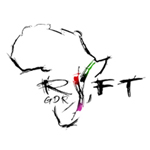Publication
Journal of Human Evolution
January 2024
Aridity, availability of drinking water and freshwater foods, and hominin and archeological sites during the Late Pliocene–Early Pleistocene in the western region of the Turkana Basin (Kenya): A review
Although the Turkana Basin is one of the driest regions of the East African Rift, its Plio–Pleistocene sediments are rich in freshwater vertebrates and invertebrates, providing evidence that freshwater resources were available to hominins in this region during the Plio–Pleistocene (4.2–0.7 Ma). Here we provide an overview of the hydroconnectivity of the Turkana Basin. We then review the period during which freshwater river and lake systems expanded into the western region of the Turkana Basin, where hominin and archeological sites have been discovered in sediments dating back to the Late Pliocene–Pleistocene. Freshwater conditions are reconstructed from river and lake sediments and the flora and micro- and macofauna they contain. Data synthesis suggests that drinking water and freshwater foods prevailed in the western region of the Turkana Basin at 4.20–3.98 Ma, 3.70–3.10 Ma, 2.53–2.22 Ma, then between 2.10 and 1.30 Ma and intermittently from 1.27 to 0.75 Ma. Milestones in hominin evolution occurred in this context, such as the first occurrence of Australopithecus anamensis (4.20–4.10 Ma) and Kenyanthropus platyops (3.50 Ma and 3.30–3.20 Ma), the presence of Paranthropus aethiopicus (2.53–2.45 Ma), early Homo (2.33 Ma), Paranthropus boisei (2.25 Ma and 1.77–1.72 Ma) and Homo ergaster/Homo erectus (1.75 Ma, 1.47–1.42 Ma and 1.10–0.90 Ma). Developments in hominin behavior also occurred during this timeframe, including the first known stone tools (3.30 Ma), the oldest Oldowan sites (2.34 Ma and 2.25 Ma) in the Turkana Basin, the earliest known evidence for the emergence of bifacial shaping in eastern Africa (1.80 Ma), and the first known Acheulean site (1.76 Ma). Our synthesis suggests that, diachronic variation in hydroconnectivity played a role on the amount of drinking water and freshwater foods available in the western region of the Turkana Basin, despite regional aridity.
references
Xavier Boës, Bert Van Bocxlaer, Sandrine Prat, Craig Feibel, Jason Lewis, Vincent Arrighi, Nicholas Taylor, Sonia Harmand 2024 – Aridity, availability of drinking water and freshwater foods, and hominin and archeological sites during the Late Pliocene–Early Pleistocene in the western region of the Turkana Basin (Kenya): A review – Journal of Human Evolution Vol. 186, 103466 – https://doi.org/10.1016/j.jhevol.2023.103466


